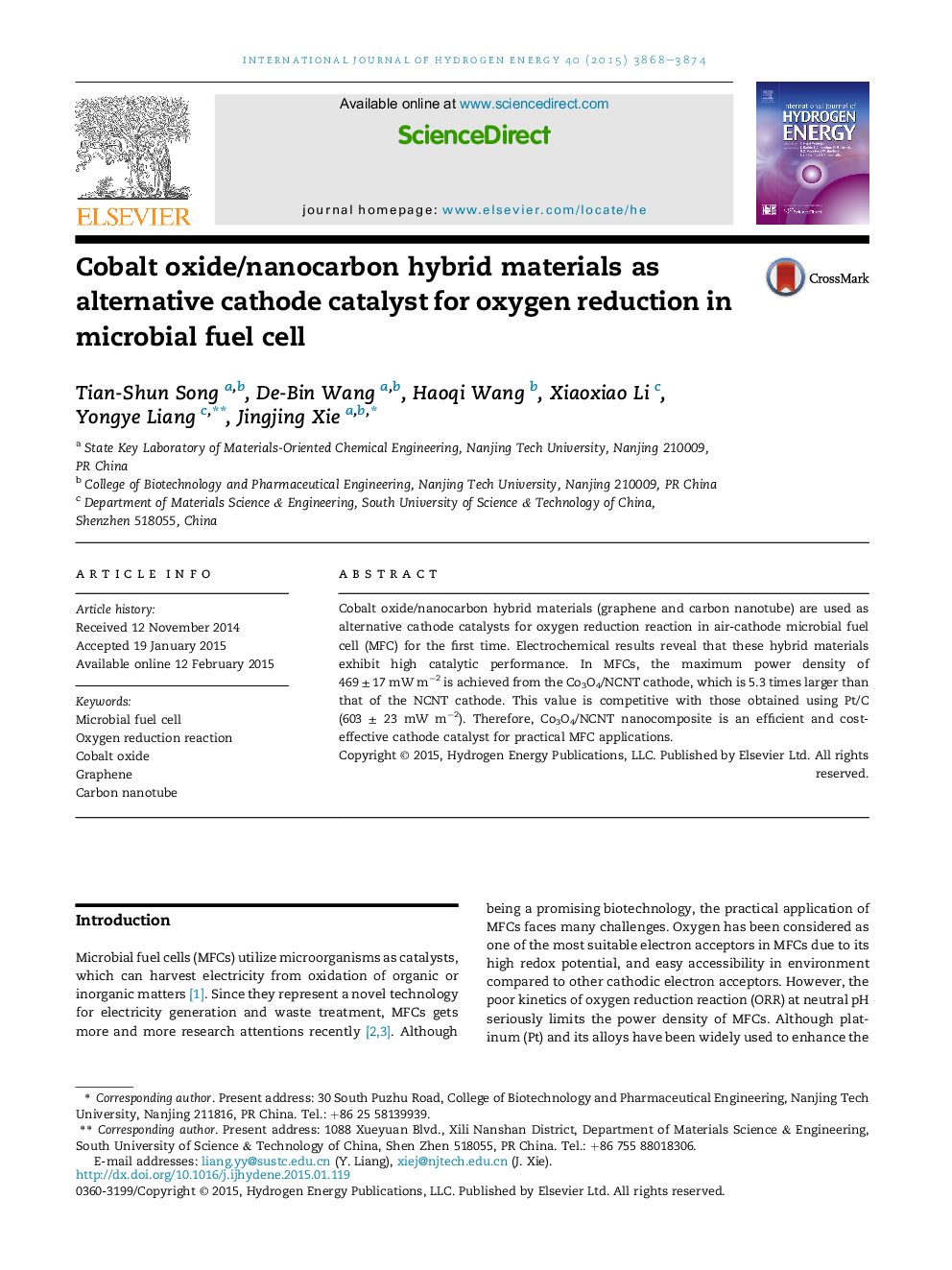| Article ID | Journal | Published Year | Pages | File Type |
|---|---|---|---|---|
| 1275813 | International Journal of Hydrogen Energy | 2015 | 7 Pages |
•Cobalt oxide/nanocarbon hybrid materials are prepared.•Co3O4/NCNT catalyst exhibits high catalytic activity for ORR.•Microbial fuel cell with Co3O4/NCNT cathode demonstrates good stability.
Cobalt oxide/nanocarbon hybrid materials (graphene and carbon nanotube) are used as alternative cathode catalysts for oxygen reduction reaction in air-cathode microbial fuel cell (MFC) for the first time. Electrochemical results reveal that these hybrid materials exhibit high catalytic performance. In MFCs, the maximum power density of 469 ± 17 mW m−2 is achieved from the Co3O4/NCNT cathode, which is 5.3 times larger than that of the NCNT cathode. This value is competitive with those obtained using Pt/C (603 ± 23 mW m−2). Therefore, Co3O4/NCNT nanocomposite is an efficient and cost-effective cathode catalyst for practical MFC applications.
